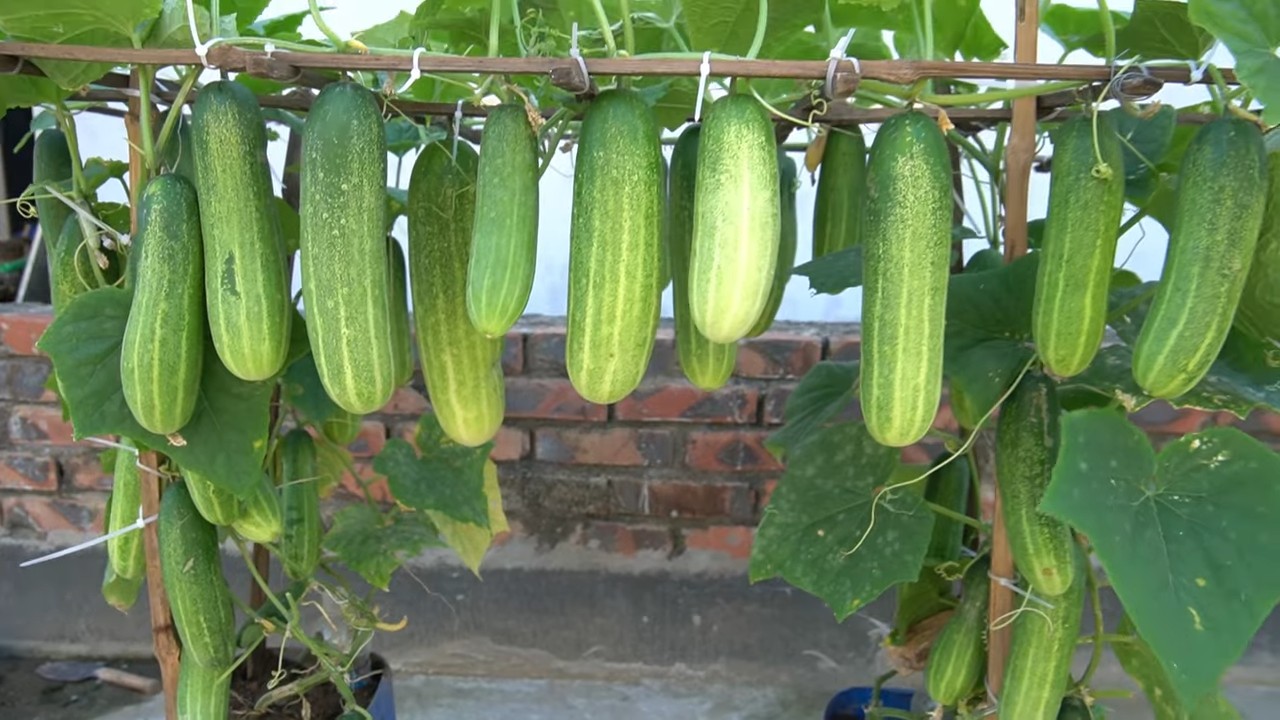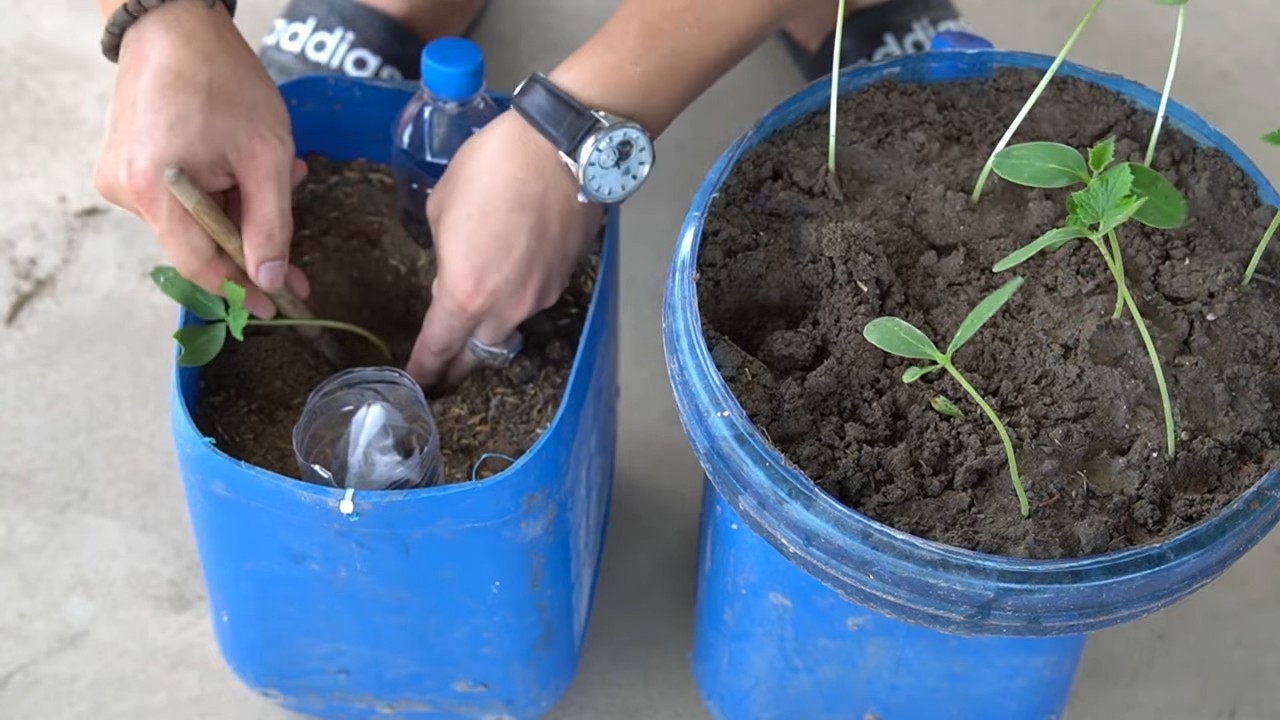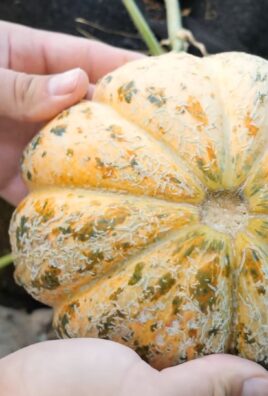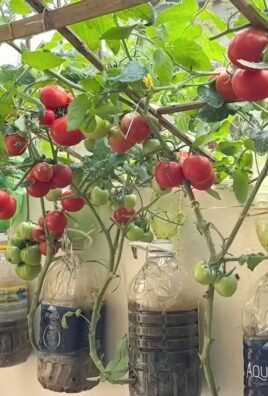Cucumber Pot Growing Hack: Unlock the secrets to a bountiful harvest, even without a sprawling garden! Have you ever dreamed of plucking fresh, crisp cucumbers straight from your own backyard, but thought you didn’t have the space? Well, dream no more! This DIY guide is your ticket to cucumber success, regardless of your garden’s size. We’re diving deep into a simple yet incredibly effective cucumber pot growing hack that will transform your patio, balcony, or even a sunny windowsill into a thriving cucumber patch.
Growing cucumbers in pots isn’t just a modern trend; container gardening has roots stretching back centuries. From the hanging gardens of Babylon to the carefully cultivated courtyards of ancient Rome, people have always found ways to nurture plants in limited spaces. But why is this particular cucumber pot growing hack so essential today? In our increasingly urbanized world, access to land is shrinking, yet the desire for fresh, homegrown produce remains strong. Plus, let’s be honest, store-bought cucumbers just don’t compare to the vibrant flavor and satisfying crunch of a cucumber you’ve nurtured yourself.
I’m going to show you how to maximize your yield, minimize common cucumber growing problems, and enjoy a continuous supply of delicious cucumbers all season long. Get ready to roll up your sleeves and discover the joy of growing your own cucumbers, one pot at a time!

Grow Cucumbers in Pots Like a Pro: My Foolproof DIY Guide
Hey there, fellow gardening enthusiasts! I’m so excited to share my tried-and-true method for growing cucumbers in pots. Forget sprawling vines taking over your garden; this technique lets you enjoy fresh, crisp cucumbers even if you’re short on space. I’ve perfected this over the years, and trust me, it’s easier than you think!
What You’ll Need: The Essential Supplies
Before we dive in, let’s gather our supplies. Having everything ready will make the whole process smooth and enjoyable.
* Large Pot: This is crucial! You’ll need a pot that’s at least 24 inches in diameter and 12 inches deep. Cucumbers have extensive root systems, and a smaller pot will restrict their growth. I personally prefer using a resin pot because they are lightweight and durable.
* Cucumber Seeds or Seedlings: You can start from seeds or buy seedlings from your local nursery. I’ve had success with both, but seedlings will give you a head start. Bush varieties are best suited for containers.
* High-Quality Potting Mix: Don’t skimp on this! Use a well-draining potting mix specifically formulated for containers. Garden soil is too heavy and compacts easily, hindering root growth.
* Trellis or Support Structure: Cucumbers are vining plants, so they need something to climb on. A trellis, tomato cage, or even a sturdy bamboo stake will work. I’m a big fan of A-frame trellises for pots.
* Slow-Release Fertilizer: This will provide your cucumber plants with a steady supply of nutrients throughout the growing season. Look for a fertilizer specifically formulated for vegetables.
* Watering Can or Hose: Essential for keeping your plants hydrated.
* Gardening Gloves: Protect your hands from dirt and potential irritants.
* Optional: Mulch (straw, wood chips, or shredded bark) to help retain moisture and suppress weeds.
Step-by-Step Guide: Planting Your Cucumber Seeds or Seedlings
Okay, let’s get our hands dirty! This is the fun part.
1. Prepare the Pot: Fill your large pot with the high-quality potting mix, leaving about 2 inches of space at the top. Gently tap the pot to settle the soil.
2. Sowing Seeds (if starting from seed): Make small indentations in the soil, about 1 inch deep and 2-3 inches apart. Place 2-3 cucumber seeds in each indentation. Cover the seeds with soil and gently water. I always plant a few extra seeds to ensure germination.
3. Planting Seedlings (if using seedlings): Gently remove the cucumber seedlings from their containers. Loosen the root ball slightly. Dig a hole in the potting mix large enough to accommodate the root ball. Place the seedling in the hole and backfill with soil, gently firming it around the base of the plant.
4. Water Thoroughly: Water the pot deeply until water drains out of the bottom. This helps settle the soil and ensures the roots are well-hydrated.
5. Install the Trellis or Support: Insert your trellis or support structure into the pot, making sure it’s securely anchored. Position it close to the cucumber plants so they can easily start climbing.
6. Apply Slow-Release Fertilizer: Sprinkle the slow-release fertilizer around the base of the plants, following the instructions on the package. Gently work it into the top layer of soil.
7. Mulch (Optional): Apply a layer of mulch around the base of the plants to help retain moisture and suppress weeds.
8. Choose the Right Location: Place your pot in a sunny location that receives at least 6-8 hours of direct sunlight per day. Cucumbers need plenty of sun to thrive.
Ongoing Care: Nurturing Your Cucumber Plants
Now that your cucumbers are planted, it’s time to provide them with the care they need to flourish.
1. Watering: Cucumbers need consistent moisture, especially during hot weather. Water deeply whenever the top inch of soil feels dry to the touch. Avoid overwatering, as this can lead to root rot. I usually water every day or every other day, depending on the weather.
2. Fertilizing: Supplement the slow-release fertilizer with a liquid fertilizer every 2-3 weeks. Look for a balanced fertilizer or one specifically formulated for vegetables. Follow the instructions on the package.
3. Training the Vines: As the cucumber vines grow, gently guide them onto the trellis or support structure. You can use plant ties or clips to secure them in place. This will help keep the vines organized and prevent them from sprawling on the ground.
4. Pruning: Pruning can help improve air circulation and encourage fruit production. Remove any yellowing or dead leaves. You can also prune the side shoots (suckers) that grow from the main stem to encourage more energy to be directed towards fruit production.
5. Pest and Disease Control: Keep an eye out for common cucumber pests like aphids, cucumber beetles, and squash bugs. You can control these pests with insecticidal soap or neem oil. Also, watch out for diseases like powdery mildew and downy mildew. Ensure good air circulation and avoid overhead watering to prevent these diseases. If you spot any signs of disease, treat them promptly with a fungicide.
6. Pollination: Cucumbers need to be pollinated to produce fruit. If you’re growing your cucumbers indoors or in an area with limited bee activity, you may need to hand-pollinate them. To do this, use a small paintbrush to transfer pollen from the male flowers (which have a long, thin stem) to the female flowers (which have a small cucumber-like structure behind the flower).
7. Harvesting: Cucumbers are typically ready to harvest 50-70 days after planting. Harvest them when they are the desired size and color. Use a sharp knife or scissors to cut the cucumbers from the vine, leaving a small stem attached. Regular harvesting will encourage the plant to produce more fruit.
Choosing the Right Cucumber Variety: Bush vs. Vine
Selecting the right cucumber variety is key for successful container gardening. I’ve found that bush varieties are generally better suited for pots because they are more compact and don’t require as much space as vining varieties.
* Bush Varieties: These varieties are compact and bushy, making them ideal for containers. Some popular bush varieties include ‘Bush Champion,’ ‘Spacemaster,’ and ‘Salad Bush.’
* Vining Varieties: These varieties produce long vines that need a lot of space to grow. While you can grow vining varieties in containers, you’ll need a larger pot and a sturdy trellis to support the vines. Some popular vining varieties include ‘Marketmore 76,’ ‘Straight Eight,’ and ‘Lemon Cucumber.’
Troubleshooting Common Problems: My Tips and Tricks
Even with the best care, you might encounter some problems while growing cucumbers in pots. Here are some common issues and how to address them:
* Yellowing Leaves: This can be caused by overwatering, underwatering, nutrient deficiencies, or pests. Check the soil moisture and adjust your watering accordingly. Fertilize your plants regularly with a balanced fertilizer. Inspect the leaves for pests and treat them as needed.
* Lack of Fruit Production: This can be caused by poor pollination, nutrient deficiencies, or stress. Hand-pollinate your cucumbers if necessary. Fertilize your plants regularly. Ensure they are getting enough sunlight and water.
* Bitter Cucumbers: This can be caused by inconsistent watering, high temperatures, or stress. Water your cucumbers regularly and deeply, especially during hot weather. Provide shade during the hottest part of the day. Harvest cucumbers when they are young and tender.
* Powdery Mildew: This fungal disease can cause white, powdery spots on the leaves. Improve air circulation by pruning the plants. Avoid overhead watering. Treat the plants with a fungicide.
* Pests: Aphids, cucumber beetles, and squash bugs can damage cucumber plants. Inspect your plants regularly for pests and treat them with insecticidal soap or neem oil.
Extra Tips for Success: My Secret Weapon
Here are a few extra tips that I’ve learned over the years that can help you grow even more cucumbers in pots:
* Rotate Your Crops: Avoid planting cucumbers in the same pot year after year. This can help prevent soilborne diseases and nutrient depletion.
* Use Companion Planting: Plant companion plants like marigolds, basil, or nasturtiums around your cucumbers to help deter pests and attract pollinators.
* Provide Shade During Heat Waves: If you live in an area with hot summers, provide your cucumber plants with some shade during the hottest part of the day to prevent them from getting stressed.
* Water in the Morning: Water your cucumbers in the morning so the leaves have time to dry before nightfall. This can help prevent fungal diseases.
* Harvest Regularly: Harvest your cucumbers regularly to encourage the plant to produce more fruit

Conclusion
So, there you have it! This simple yet ingenious cucumber pot growing hack is more than just a gardening shortcut; it’s a game-changer for anyone looking to maximize their yield, minimize space, and enjoy the freshest, most flavorful cucumbers imaginable. We’ve walked you through the process, highlighting the benefits of vertical growth, improved air circulation, and the sheer joy of watching your cucumbers thrive in a controlled environment.
But why is this DIY trick a must-try? Because it addresses several common gardening challenges head-on. Forget sprawling vines taking over your garden beds. Say goodbye to cucumbers rotting on the ground due to poor air circulation. And wave farewell to the frustration of limited space preventing you from growing your favorite vegetables. This method offers a practical, efficient, and visually appealing solution to all these problems.
Beyond the basic setup, there’s plenty of room for customization. Consider experimenting with different pot sizes to accommodate various cucumber varieties. Bush cucumbers, for example, might thrive in smaller containers, while vining types will appreciate larger pots and more robust trellises. You can also tailor the soil mix to your specific climate and cucumber needs. Adding compost or other organic matter will provide essential nutrients and improve drainage.
For those in hotter climates, consider using lighter-colored pots to reflect sunlight and prevent the soil from overheating. In cooler regions, darker pots can help retain warmth. And don’t forget about companion planting! Marigolds, basil, and nasturtiums are excellent choices for deterring pests and attracting beneficial insects to your cucumber patch.
We also encourage you to think outside the box when it comes to trellises. While a simple bamboo structure works perfectly well, you could also repurpose old ladders, metal fencing, or even create a living trellis using sunflowers or other tall, sturdy plants. The possibilities are endless!
Ultimately, the success of this cucumber pot growing hack hinges on your willingness to experiment and adapt. Pay close attention to your plants’ needs, adjust your watering and fertilizing schedule accordingly, and don’t be afraid to try new things. Gardening is a journey of discovery, and this method offers a fantastic opportunity to learn and grow alongside your cucumbers.
We are confident that this method will transform your cucumber growing experience. It’s a simple, effective, and rewarding way to enjoy fresh, homegrown cucumbers, even if you have limited space. So, grab your pots, seeds, and a little bit of creativity, and get ready to embark on a cucumber-growing adventure!
Now, we want to hear from you! Have you tried this cucumber pot growing hack? What were your results? What variations did you experiment with? Share your experiences, tips, and photos in the comments below. Let’s create a community of cucumber enthusiasts and learn from each other’s successes and challenges. Your insights could inspire others to give this method a try and discover the joy of growing their own delicious cucumbers. Happy gardening!
Frequently Asked Questions (FAQ)
What type of cucumbers are best suited for pot growing?
Almost any cucumber variety can be grown in pots, but some are better suited than others. Bush varieties, like Spacemaster or Bush Champion, are naturally compact and well-suited for smaller containers. Vining varieties, such as Marketmore or Straight Eight, can also be grown in pots, but they require a larger container and a sturdy trellis to support their growth. Consider the size of your pot and the available space when choosing a cucumber variety. Also, look for varieties that are disease-resistant, especially if you live in an area with high humidity or common cucumber diseases.
How big should the pot be for growing cucumbers?
The size of the pot depends on the cucumber variety you choose. For bush varieties, a 5-gallon pot is usually sufficient. For vining varieties, a 10-gallon pot or larger is recommended. The larger the pot, the more room the roots have to grow, and the more water and nutrients the plant can access. Make sure the pot has drainage holes to prevent waterlogging, which can lead to root rot.
What type of soil should I use for growing cucumbers in pots?
Cucumbers prefer well-draining, nutrient-rich soil. A good potting mix for cucumbers should contain a blend of peat moss, perlite, and vermiculite. You can also add compost or other organic matter to improve the soil’s fertility and drainage. Avoid using garden soil in pots, as it can become compacted and prevent proper drainage.
How often should I water my cucumber plants in pots?
Cucumbers need consistent moisture, especially when they are actively growing and producing fruit. Water your cucumber plants deeply whenever the top inch of soil feels dry to the touch. In hot weather, you may need to water them daily or even twice a day. Avoid overwatering, as this can lead to root rot. Use a watering can or a hose with a gentle spray nozzle to avoid damaging the plants.
How much sunlight do cucumbers need?
Cucumbers need at least 6-8 hours of sunlight per day to thrive. Choose a sunny location for your cucumber pots, preferably one that receives morning sun and afternoon shade. If you live in a very hot climate, providing some afternoon shade can help prevent the plants from overheating.
Do I need to fertilize my cucumber plants in pots?
Yes, cucumbers are heavy feeders and benefit from regular fertilization. Use a balanced fertilizer, such as 10-10-10, or a fertilizer specifically formulated for vegetables. Follow the instructions on the fertilizer package for application rates. You can also supplement with organic fertilizers, such as compost tea or fish emulsion. Fertilize your cucumber plants every 2-3 weeks during the growing season.
How do I support my cucumber vines in pots?
Vining cucumber varieties need a trellis or other support structure to climb on. You can use a bamboo trellis, a metal fence, or even a DIY structure made from branches or twine. Make sure the trellis is sturdy enough to support the weight of the mature vines and fruit. Train the vines to climb the trellis by gently guiding them and tying them to the structure with soft twine or plant ties.
How do I prevent pests and diseases from affecting my cucumber plants?
To prevent pests and diseases, start by choosing disease-resistant cucumber varieties. Keep your garden clean and free of debris, and water your plants at the base to avoid wetting the foliage. Monitor your plants regularly for signs of pests or diseases, and take action promptly if you notice any problems. Common cucumber pests include aphids, cucumber beetles, and squash bugs. Common diseases include powdery mildew, downy mildew, and bacterial wilt. Use organic pest control methods, such as insecticidal soap or neem oil, to control pests. For diseases, use a fungicide or remove infected leaves.
When should I harvest my cucumbers?
Harvest your cucumbers when they are the desired size and color. The exact size and color will depend on the variety you are growing. Generally, cucumbers are ready to harvest when they are firm and have a smooth, even skin. Avoid letting the cucumbers become overripe, as they can become bitter and seedy. Harvest cucumbers regularly to encourage continued production.
Can I grow cucumbers in pots indoors?
Yes, you can grow cucumbers in pots indoors, but you will need to provide them with adequate light and warmth. Use grow lights to supplement natural sunlight, and maintain a temperature of at least 70 degrees Fahrenheit. Pollinate the flowers manually using a small paintbrush to transfer pollen from the male flowers to the female flowers.




Leave a Comment